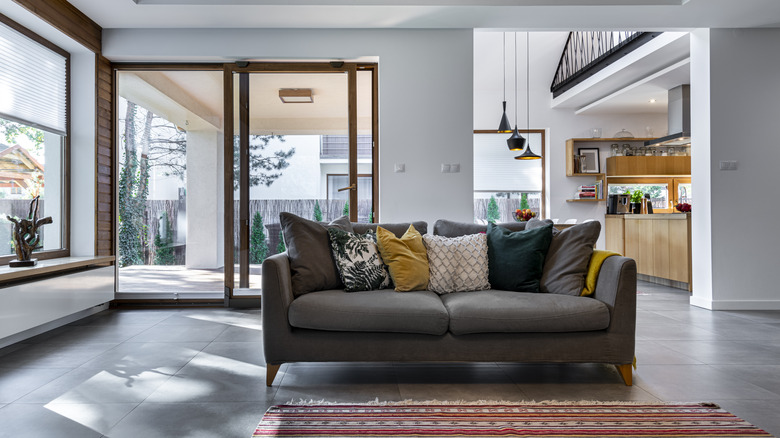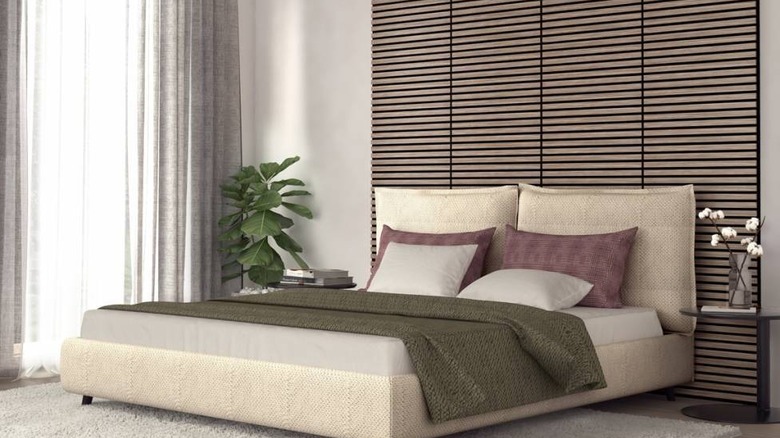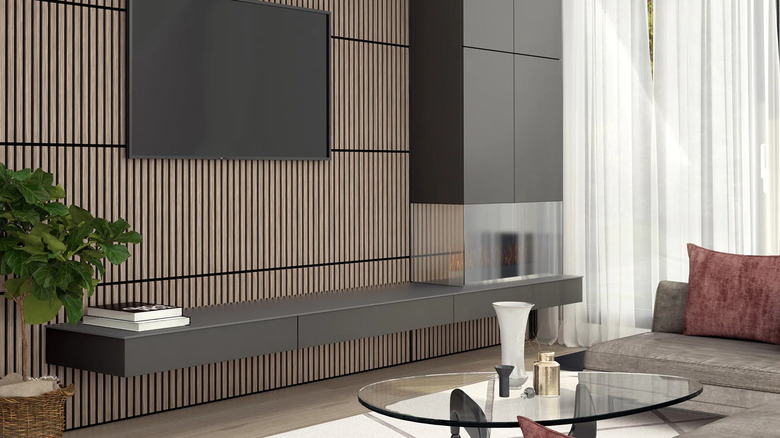Costco's Stylish Solution For A Better-Sounding Open-Concept Living Space
To borrow an old joke, and not for the first time: If you ask two sound experts about acoustic room treatments, you'll get three opinions. Even worse, ask two audiophiles and you'll get six opinions, all of them wrong. But there are a couple of universally acknowledged truths about acoustic treatment, and Costco's new Artika Sonolok Acoustic Slat Panels address them pretty well. The result should be a noticeable improvement in the sometimes challenging acoustics of an open-concept space.
Artika is a line of Costco home improvement products branded Costco Next. The brand is mostly known for lighting products, and it's easy to see how a charge like "make stylish products for sale in a discount warehouse" could result in some fumbling of the technical acoustics, and even perhaps of the design elements. But they seem to have mostly gotten the former right, and completely nailed the latter. The panels, available in natural wood oak and walnut finishes over MDF, look great in every orientation and combination we've seen. Many pictures of the panels show them in bedrooms, and the product description on the Costco site mentions using the panels as a headboard, which certainly looks slick and probably sounds almost as good. Of course, whether something sounds good is partly a function of what you want it to sound like. What sounds are you trying to change? How far are they from you, and from the wall you're acoustically treating?
How the acoustic panels work, and might not work
The basic principles involved in improving a room's sound with the Sonolok panels are sound absorption via a felt pad, onto which evenly spaced MDF slats have been attached in order to add sound diffusion properties. Both are great approaches in general. Costco hasn't detailed anything substantial about the makeup of the felt pads, including their noise reduction coefficient, but in principle properly treated felt is capable of effectively dampening sound. As a rule, thinner treatments like this tend to mostly affect higher frequencies, meaning these panels might not be as efficient in dealing with low-frequency sounds — like traffic noise and your neighbor's bass.
The hard-surface variations created by the slats should also be pretty good at sound diffusion, most noticeably anywhere echoes or unpleasant reverberations are present. Covering a wall with paneling that alternates hard surfaces and felt-backed gaps causes the sound reflections that would normally be a little out of sync with their source to be spread around and return to the ears as rich, rounded sounds rather than harsh, out-of-phase echoes. That said, to improve acoustics in a pro or budget spare room recording studio, diffusion panels are likely to be located farther from the listener than you might be able to mount these in a lounge or bedroom. But for softening the sounds of everyday living, reducing noise in open plan spaces and giving them a less echoey feel, the Costco panels could be a practical solution, and some of the reviews mention instant and noticeable noise reduction.
How to use Sonolok panels in an open-concept design
Fluted wood paneling to improve acoustics has been around for a while, and the look is unabashedly modern; what says geometry like a hundred parallel lines? But softened with the right accessories, the Sonolok panels can fit right in with the contemporary minimalism of the organic modern aesthetic. The slatted wall can also suit the Japandi style. Long a feature of Japanese architecture as a way of working with wood without introducing unnecessary ornament, timber slats also started showing up in mid-century ceilings and walls starting around 1938, making this look a fit for mid-century modern décor. Overall, the slatted look is most promising for homes built in the mid-century era, particularly the 1960s, or any rooted in Scandinavian design.
Installation should be relatively simple with the included screws and a power drill. But take note, the Sonolok wall panels would probably be overpowering both visually and sonically if overused in a space, particularly a large, open-concept area. From a design and acoustic perspective, these panels are meant to be used as an accent. Covering multiple walls in one room with acoustic panels like these could result in too much sound deadening, creating an eerily flat feeling. Not sure which wall to mount them to? Ideally, the wall treated with Sonolok panels should be one that, if left untreated, would bounce unwelcome echoes back to anyone trying to have a pleasant chat or listen to an LP.


